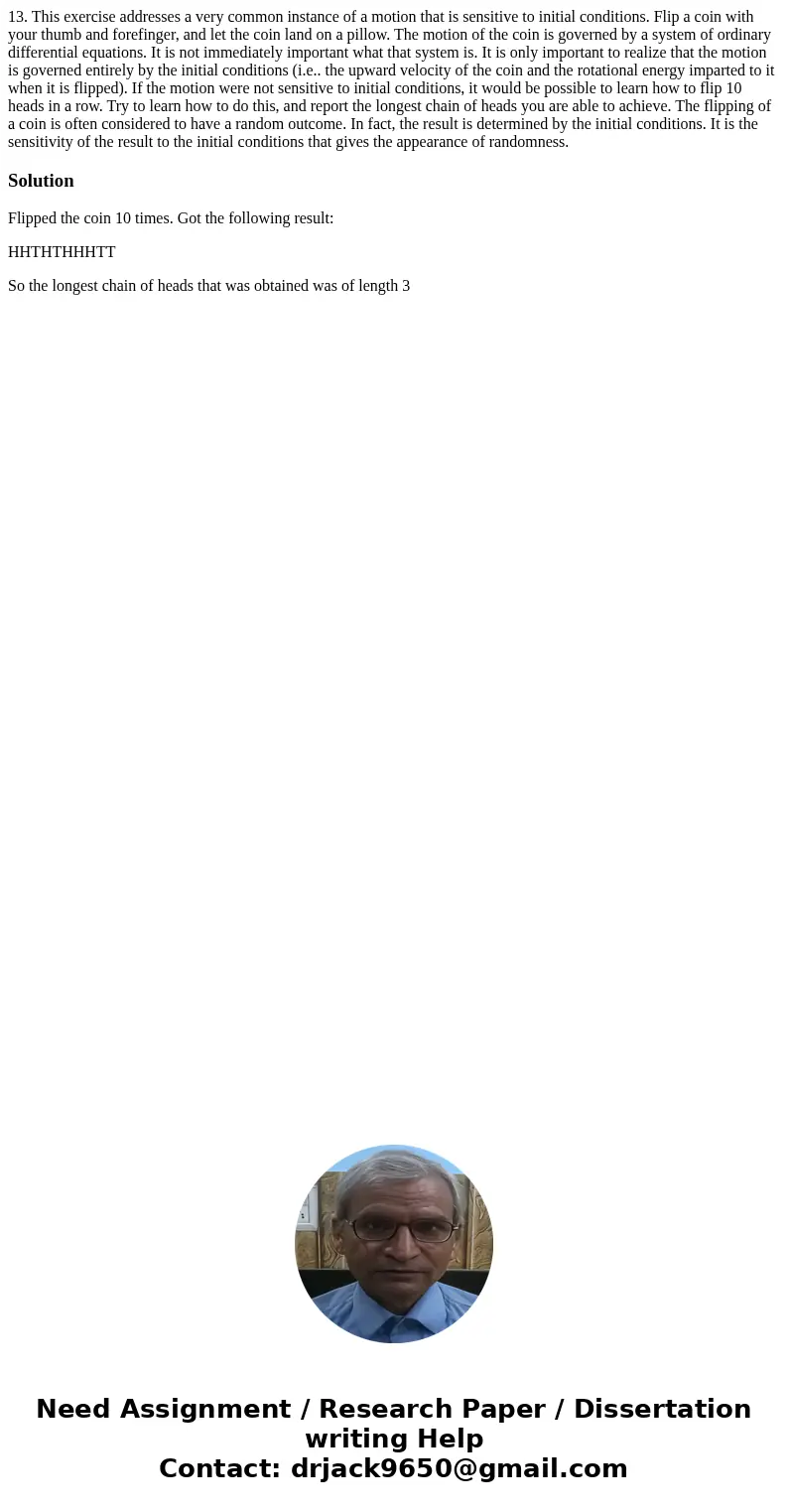13 This exercise addresses a very common instance of a motio
13. This exercise addresses a very common instance of a motion that is sensitive to initial conditions. Flip a coin with your thumb and forefinger, and let the coin land on a pillow. The motion of the coin is governed by a system of ordinary differential equations. It is not immediately important what that system is. It is only important to realize that the motion is governed entirely by the initial conditions (i.e.. the upward velocity of the coin and the rotational energy imparted to it when it is flipped). If the motion were not sensitive to initial conditions, it would be possible to learn how to flip 10 heads in a row. Try to learn how to do this, and report the longest chain of heads you are able to achieve. The flipping of a coin is often considered to have a random outcome. In fact, the result is determined by the initial conditions. It is the sensitivity of the result to the initial conditions that gives the appearance of randomness. 
Solution
Flipped the coin 10 times. Got the following result:
HHTHTHHHTT
So the longest chain of heads that was obtained was of length 3

 Homework Sourse
Homework Sourse